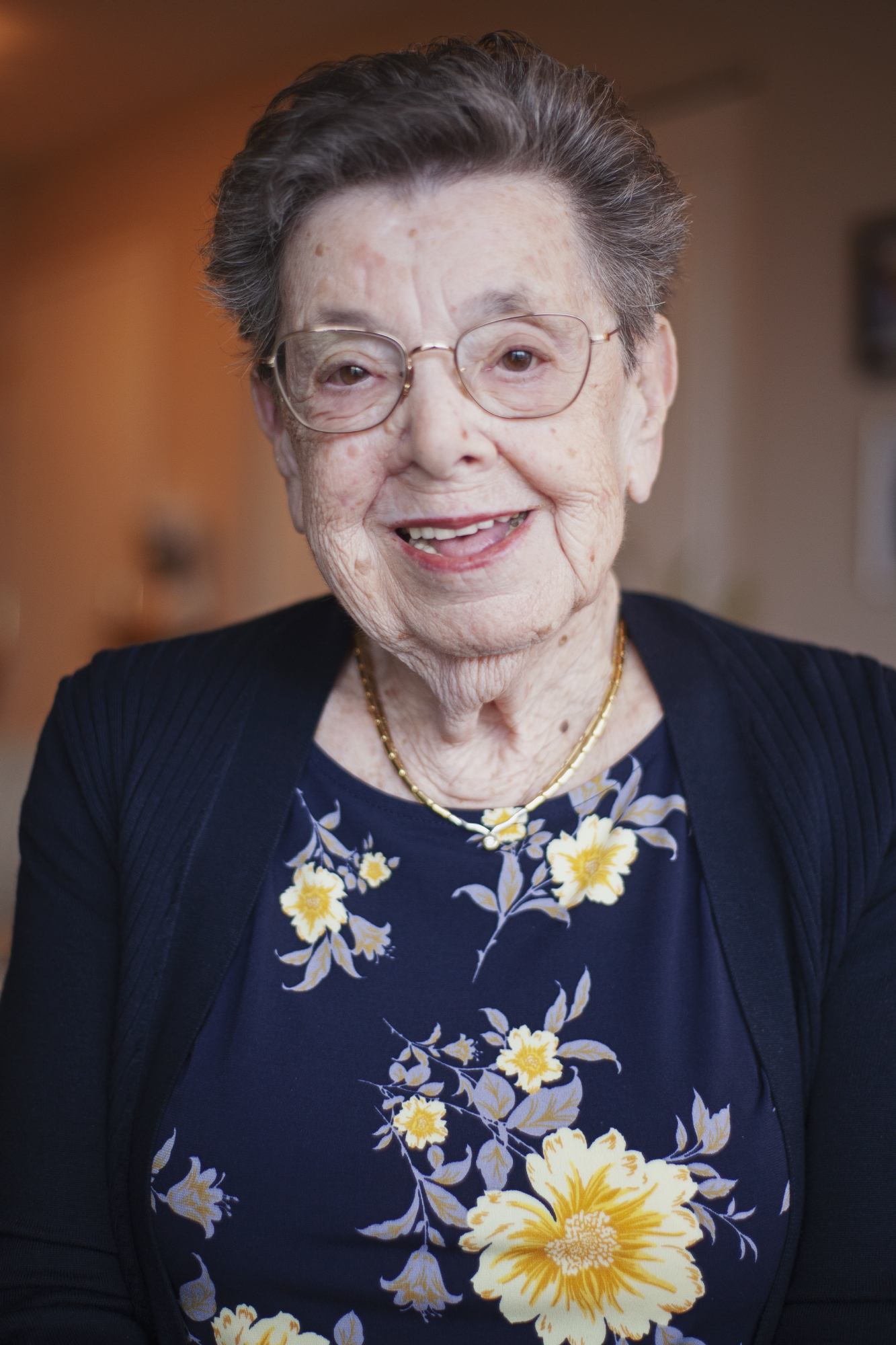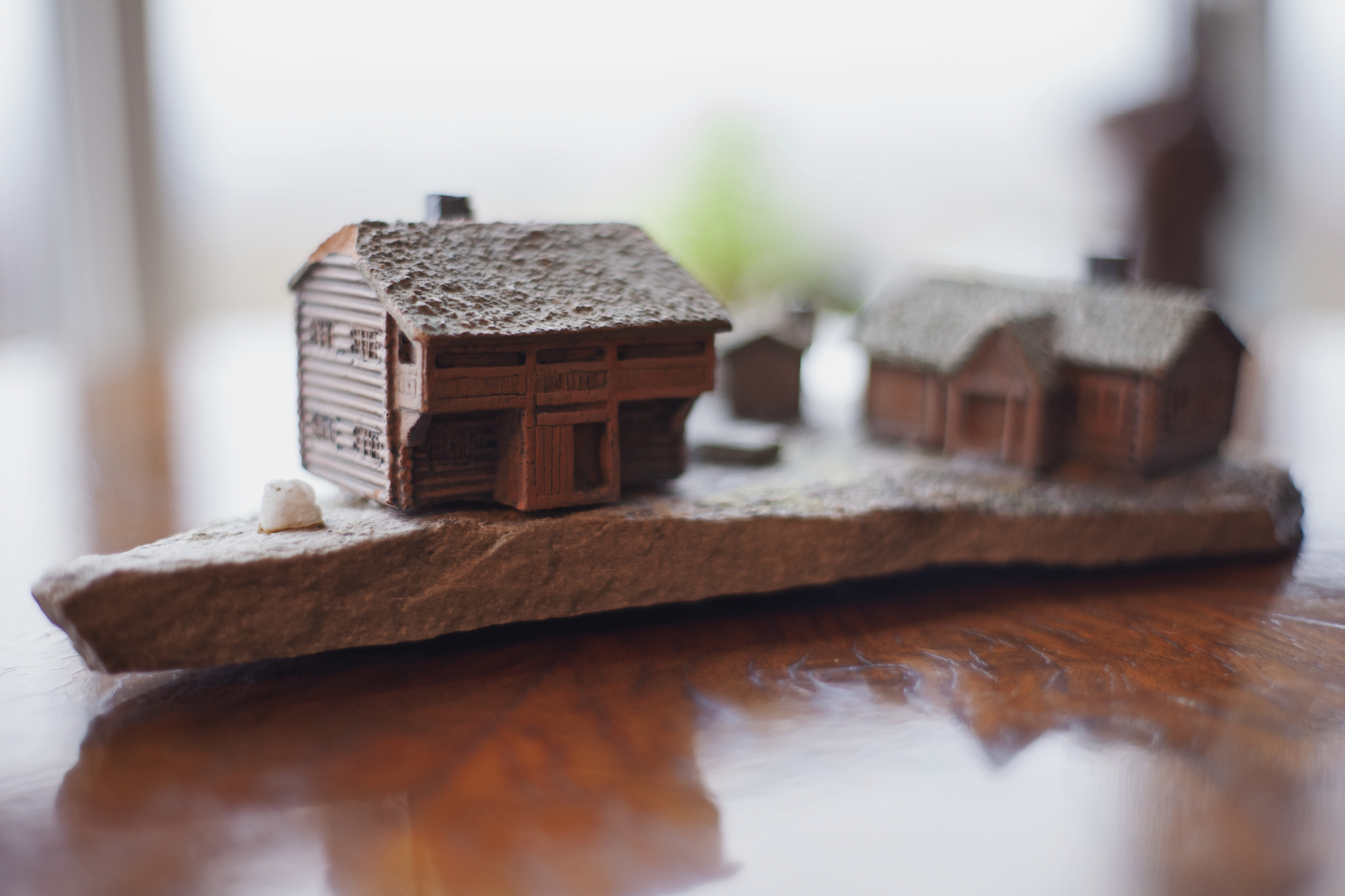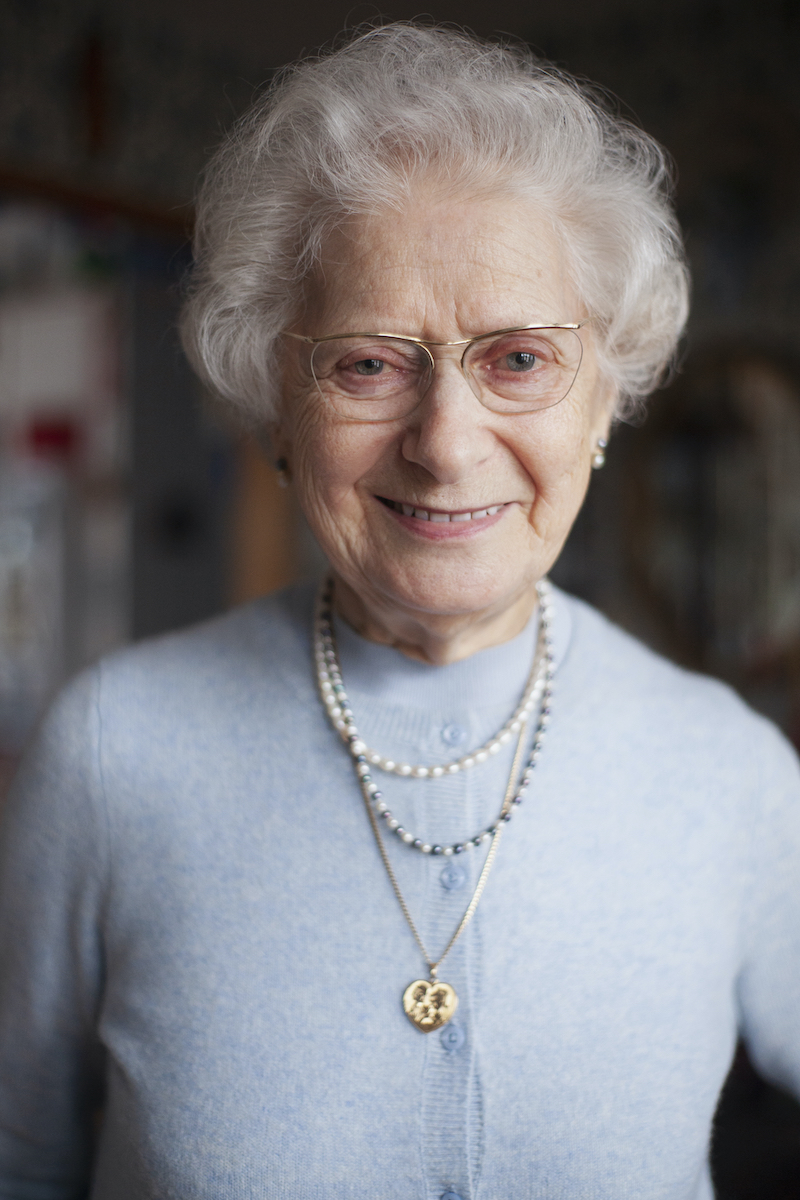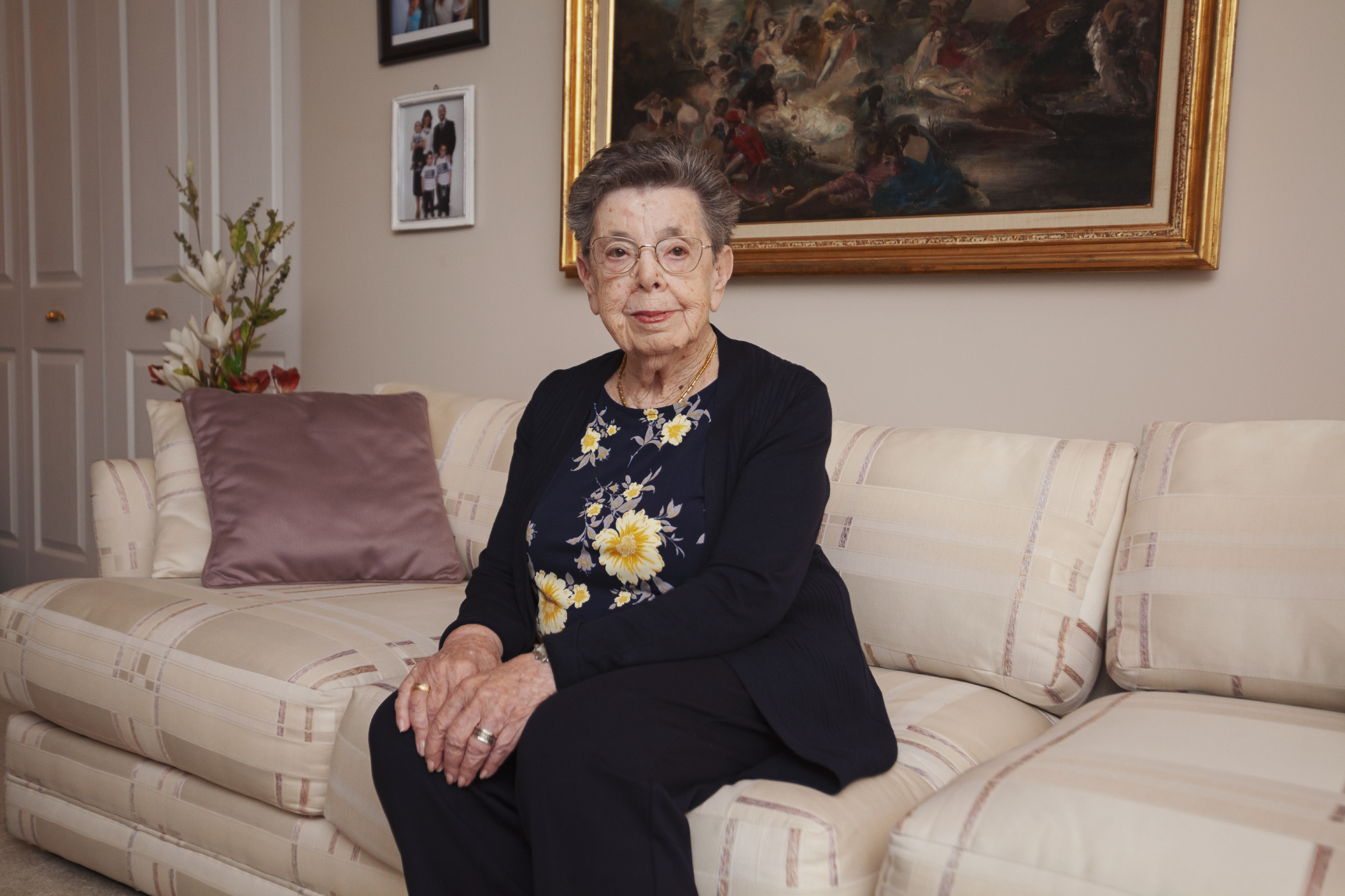
Margrit Stenge
Memories of a life in hiding
In 1995, Margrit Stenge traveled back to Buahaugen (Norway), the little village where she hid with her family during the war. During her trip, she purchased the reproduction pictured below of a seter, the little cabins that farmers lived in during the summer. Although the seter does not look exactly like the cabin in which Margrit and her parents lived at the time, she still remembers the rudimentary conditions of their hideout. One of their summer neighbours helped them leave Norway for Sweden in 1942.

Listen to the seter's story
This little treasure, I bought this on my way to the place where I was during the war in the summertime.
I had not been there since 1942. When I came to Norway in 1995, at a souvenir shop I saw this, and I
said, “I have to buy this. This is such a memory of how it used to be.” This is a replica of a seter, a
Norwegian seter. They are little cabins close together, and they are really farmers that live there during
the summertime. It’s above the treeline and it gets very cold, and there is nothing there in the
wintertime. And we lived in a cottage, not these little cabins, but nevertheless, where we lived, it was
very primitive. I remember how I carried water from the brook up to the house, how my father had
chopped wood, how I played house with the local girls on the big rock near the brook. At the time, we
met a young man and he was our neighbour, and in 1942, he told us that it was time to leave Norway.
And he promised to help us somehow to get over to Sweden, which was a neutral country. And in
January 1943, he and a friend came and picked us up, not from this place but from the village below
where we lived during the wintertime.


